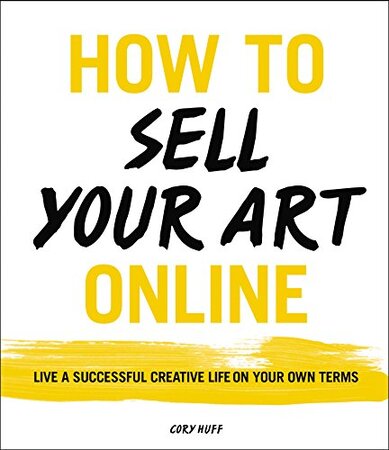Table of Contents
Many contemporary artists understand the wide range of opportunities digital art marketplaces can provide. These opportunities include widespread internet exposure, the launch of a profitable company, and the development of a dedicated fan base.
The rise of small enterprises, online work platforms, and cryptocurrencies has brought attention to the various channels for promoting digital art to the public. Additionally, the recent pandemic and widespread job loss have further highlighted these channels.
However, doubts and concerns arise when considering what to sell and where to sell it, especially for those without a sales or web marketing background. Questions like “What can I sell?” and “Where can I sell it?” Which direction should I go to reach my intended demographic? A business license is what exactly? NFTs: what are they? start to emerge.
People who have always lived in a world of imagination may find it strange when others actually view their work. But have no fear; that is precisely why we exist. If you’re new to sales or just starting out, you’ll find a wealth of useful information in this article about how to market and sell your digital artwork on various digital art marketplaces.
How you fit!
This might not sound like something you’d love to do, but it is very important to take a minute and think about yourself:
What kind of artist are you?
What do you want to do with your art?
Do you want it to be a side hustle? Or do you want it to be a full-time business?
There are many different ways to market and sell your art, and all of that depends on what kind of art you’re making in the first place.
Maybe you’re a designer, then marketing your art towards websites, brands, and even selling designs as stock images might be what’s the best for you.
If you’re a photographer, then selling prints, stock images, and working with a print-on-demand service might be what’s the best for you.
You may also be a concept artist, then selling prints, stickers, tutorials, or the brushes you use might be what your audience is looking for.
And that’s another important matter.
Do you have an audience? If you do, do you know what your audience is looking for?
Being active on social media and knowing your audience is the key to start selling your art on digital art marketplaces. Your followers and closest audience are most likely to buy your art or start supporting you, so don’t be shy and ask them what they might be more interested in getting from you. You’ll be surprised by the response you might get.
There’s also this case where you don’t have an audience. You might not be very active on social media or simply be new to the digital art world. Don’t let that be an issue, and keep reading to find out what’s the best way to start monetizing your creations on digital art marketplaces.
Commissions and fan base
Commissions
Commission work is a common entry point into the art market. Having a large fan base isn’t necessary to start making commissions. You may offer commissions to anyone online, even if you’re just starting out. The most frequent sites to display your artwork and solicit commissions are on online art communities like Behance, Art Station, Dribbble, and Deviant Art.
However, promoting your artwork in a way that attracts the types of commissions you’re hoping to receive is essential.
Suppose, for argument’s sake, that you intend to accept character design commissions. Creating some original character art or fan art is a great way to demonstrate your creative style and get a feel for how much you should charge for commissions.
In addition to using existing social and selling networks, you should think about making your own website to showcase your products. Artists can use any number of website-creation tools available online to get the job done.
You should consider purchasing your own domain if you intend to stick with your project for the long run. Do not use a subdomain provided by a platform, even if it is free, as you will not control it and it might be taken away at any time.
Why? Because determining a fair price for commission work is a notoriously difficult task. The best way to determine how long it will take you to complete a commission is to first create a few examples of the type of work you intend to offer for sale.
Then, establish a baseline pricing based on an hourly rate and adjust it upwards based on factors such as the level of detail, the speed of delivery, the intended purpose, etc.
It’s possible to take commissions via Twitter and Instagram, as well as through third-party sites like DeviantArt and Ko-Fi.
Fan Base Support
Patreon, Ko-Fi, and Buy Me a Coffee are just a few examples of sites where you may sell your work and get money from your material.
Fans will surely follow and support you if you give unique stuff for a nominal charge.
Merch is the newest addition to the menu of options available on such sites. Some of these print-on-demand services even let you deliver free or discounted products to your most devoted fans in exchange for a tiny percentage of your sales.
Digital Art Marketplaces to Sell your Art
There are many digital art marketplaces online to purchase and sell digital assets, such as online markets, online stores, and newer, emerging platforms. Finding the proper one may be time-consuming and exhausting, taking away from the effort you could be putting towards producing more of the assets you plan to sell on digital art marketplaces. Now, lets introduce some well known platforms and their strengths.
Creative Market
On this platform, you have the opportunity to offer vector graphics, templates, and various digital assets like illustrations, icons, fonts, and textures for sale.
Before your works are made available on the platform, they will undergo a thorough evaluation process for approval.
The platform boasts a substantial and expanding user base, making it a dynamic and evolving marketplace. It’s important to note that this option includes a 40% commission fee on each sale, which you should consider.
Ideal for those specializing in photography, graphic assets, and 3D assets.
Design Cuts
On this digital art marketplace, you can sell digital assets like brushes, backdrops, and patterns. The platform has a rigorous acceptance process, but once they approve your work, you will reach a massive audience.
Etsy
A widely used market for buying and selling everything from digital assets to physical works of art.
Many sellers on Etsy pay a percentage of their selling price, ranging from 5-15%. After paying the $0.20 listing charge and the 5% sales fee, you are left with a portion of your earnings. Etsy does not cover shipping fees for prints or physical art. However, they do charge a percentage of the total amount you earn.
The sheer size of its audience, though, makes standing out in any meaningful way quite challenging. If you’d rather not package and send your items individually, you may add print-on-demand services to your Etsy store.
Red Bubble, Society6, and Inprnt
You may have your work seen and found by more people by using these print-on-demand services.
There are contests that showcase your artwork on the homepage. The site will sell prints, mugs, towels, and apparel featuring your design. For these digital art marketplaces, you simply provide them with your artwork. They handle printing, packing, and delivery.
It’s up to you to decide how much of a profit you want to make, although it won’t be much. Excellent for earning money while you sleep, and a lovely approach to selling artwork internationally without the hassle of shipping.
3D Art
Believe it or not, the market for 3D art is massive, and it’s only expected to expand. You may make money off of your 3D models, as well as the assets, textures, materials, and prints/posters made from them. Some of the best digital art marketplaces to sell your 3D creations are listed here.
TurboSquid
Even if competition is fierce, the largest 3D marketplace is a fantastic venue to exhibit and sell your work due to the wide range of models and assets it offers. Creating an account and uploading your models is at no cost to you. If you join their affiliate networks and pay a membership fee, you may cut the platform’s royalty cost on your model from 40% to 20%.
CG Trader
Another fantastic venue for selling your 3D creations. CG Trader is extremely comparable to TurboSquid in terms of audience size, and it offers a similar benefit—70%-80% royalties—but from the outset. The network also allows users to take on freelancing tasks, so if you’re looking to increase your income and profile, CG Trader is the place to be.
Shapeways
3D printing used to be a niche market. But the demand for on-demand 3D printing services has increased significantly in recent years. Previously, making and selling 3D prints was impossible due to the limited number of people with 3D printers. Now, websites like Shapeways have made it easier than ever to sell 3D printed models. To sell your wares, you’ll still need a website and a storefront. However, you can now focus more on new product development instead of spending time on producing, failing, or maintaining the 3D printer.
NFT’s and Crypto
I realise that many of you don’t really know or truly comprehend how NFT’s works, but at this point in the year, we’ve all heard about NFT’s and cryptocurrencies being everywhere.
Non Fungible Tokens, or NFTs for short, relate to the innate human tendency to attribute worth to objects that have no objective value. Do these words seem familiar to you? However, this is nothing new for the art market.
The question is, why does a single Picasso signature get tens of thousands of dollars at auction?
In what ways did Picasso stand out? Why did any performer merit special treatment?
Obviously, it was due to the importance the general public placed on them.
The same is true for NFTs. Put any price you want on your creations (even digital artwork), and if people appreciate them enough, they will pay it. There has been huge advancements in NFT marketing.
There are no middlemen between you and the individual who bought the goods since the transaction is recorded in a public database (the Blockchain) and validated and authorised by the public.
Everything remains in the digital realm, but there is a very real market for digital art and a very real means to sell it.
There are currently several digital art marketplaces. OpenSea, Foundation, Raribel and many more are up and running. You can sell everything from little things to massive collections. While the market may be a little crowded at this point, it is still well worth exploring.
The majority of NFTs are held on the Ethereum Blockchain, which is powered by a vast network of computers that use the equivalent energy of a small nation. Some Blockchains, such as Polygon and Chia, have a smaller environmental effect than others. Nevertheless, we must consider whether or not it’s worth destroying our planet for a marginal financial gain.
In conclusion, making a living off of your artistic talents by selling digital works is a viable option. Moreover can be a highly lucrative company with only a little bit of work put into it.
With any luck, this post has been informative and you’re ready to launch your campaign to increase your fan base and boost your art’s sales. Here are some popular digital art marketplaces for NFTs.
OpenSea
OpenSea is one of the leading NFT marketplaces in the industry. It offers a wide range of digital assets, including art, collectibles, virtual real estate, and more. As mentioned earlier, when venturing into the NFT space, it’s important to select a marketplace based on the blockchain you prefer. At present, Ethereum blockchain-based platforms are the most popular, and OpenSea is primarily built on Ethereum.
To get started on OpenSea, you’ll need to connect your digital wallet to the platform. This is similar to the process of buying NFTs, as it allows you to pay the necessary fees for minting your NFTs and receive sales proceeds. OpenSea provides a user-friendly interface where artists can easily create and list their NFTs. It also offers a variety of customization options for your NFT listings, such as setting a price, determining royalties, and even enabling auctions or offers.
Axie Marketplace
Axie Marketplace is another notable NFT marketplace that has gained significant attention in the realm of blockchain-based gaming. The game associated with this marketplace, called Axie Infinity, allows players to collect, breed, and battle digital creatures called Axies. These Axies are unique NFTs that can be bought, sold, and traded on the Axie Marketplace.
If you’re an artist interested in creating and selling NFTs within the gaming and collectibles niche this is the place. Axie Marketplace provides a platform to showcase your artwork to a specific audience. By connecting your digital wallet to the marketplace, you can list your Axies or other related digital assets for sale. The marketplace also features a robust community and ecosystem, offering opportunities for collaborations, tournaments, and in-game rewards.
Larva Labs/CryptoPunks
Larva Labs’ CryptoPunks has earned significant recognition and value as one of the pioneering projects in the NFT space. CryptoPunks are unique, algorithmically generated pixel art characters, each with distinct attributes and rarity levels. They have become highly sought after by collectors and enthusiasts.
To buy or sell CryptoPunks, you can utilize the marketplace provided by Larva Labs. This platform enables users to browse the available CryptoPunks, view their attributes and rarity, and make purchase offers. It’s worth noting that CryptoPunks often command high prices due to their scarcity and popularity within the NFT community.
When listing your own CryptoPunk for sale, you’ll need to connect your digital wallet to the Larva Labs marketplace. This allows you to create a listing, set the desired price, and receive payment. The payments are in the form of cryptocurrency when your CryptoPunk finds a buyer.
Overall, these three marketplaces offer unique opportunities for artists to enter the world of NFTs. OpenSea provides a broad range of digital assets. Axie Marketplace focuses on gaming and collectibles. Larva Labs/CryptoPunks offers a niche market for algorithmically generated pixel art characters. By understanding the specifics of each marketplace and connecting your digital wallet, you can start minting and selling your NFTs to a global audience of collectors and enthusiasts.
Rarible
Rarible is a popular decentralized marketplace. Here artists and creators can mint, buy, and sell their own NFTs. Built on the Ethereum blockchain, Rarible provides a user-friendly platform. Artists can showcase their digital artwork, music, videos, and other creative works as unique and verifiable tokens.
One of the key features of Rarible is its emphasis on community engagement and governance. Artists and collectors can actively participate in the platform’s decision-making process. You can participate in a token-based voting, shaping the future direction of Rarible’s development and policies. This community-driven approach fosters a sense of ownership and empowerment among creators and collectors alike.
Further reading on the topic
This amazing book talks about how to skip the gallery system, focus on the right market and find customers directly. Galleries have always been the way for artist to sell their artwork. However the internet is connecting artists and buyers helping them make profits that didn’t exist before.
How to Sell Your Art Online is the guide for artist to make a successful living. Cory Huff debunks the starving artist myth and describes strategies essential for artist creations to sell. He focuses on topics like niche, website elements, email marketing, social media, paid advertising and how to tie all of this with offline success.
He also digs into topics like what artists face when self marketing and shares secrets on how to overcome related challenges. This best seller book on Amazon will help you find your way through the various challenges a single artist will face when selling art online.






